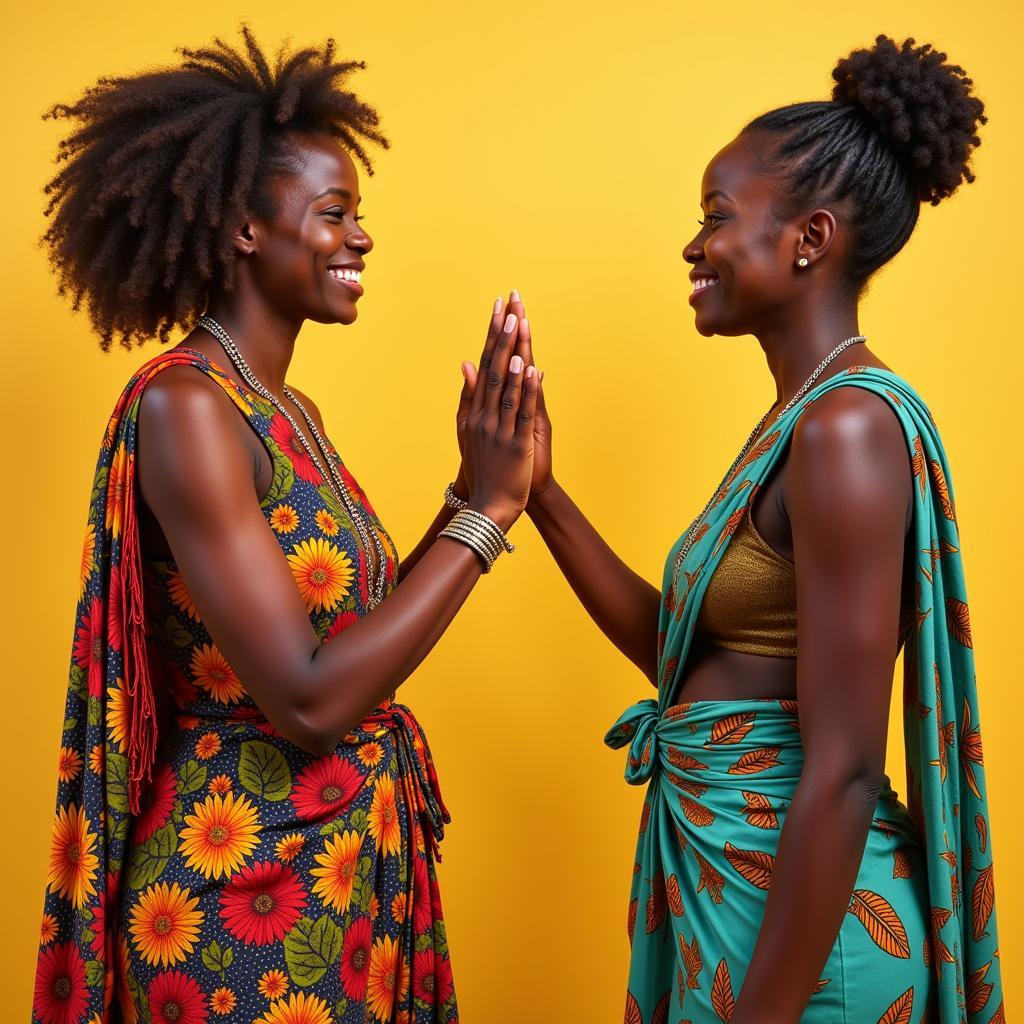African Influence on Latin America Religion
The interwoven threads of African and Latin American religious practices are a testament to the enduring impact of the transatlantic slave trade. This article explores the profound African Influence On Latin America Religion, revealing the rich tapestry of beliefs, rituals, and traditions that emerged from this cultural exchange. We will delve into specific examples, demonstrating how African spirituality adapted and thrived in the New World, leaving an indelible mark on the religious landscape of Latin America. Just after the arrival of enslaved Africans, their spiritual traditions began to intermingle with existing indigenous beliefs and imposed European Christianity, creating vibrant syncretic religions.
One of the most compelling examples of this religious fusion is the development of various Afro-Latin American religions, often characterized by their reverence for ancestors, deities, and spirits. These religions, including Santería in Cuba, Candomblé in Brazil, and Vodou in Haiti, draw heavily on West African spiritual traditions, while incorporating elements of Catholicism and indigenous beliefs. The resulting blend is a unique and powerful expression of faith, reflecting the resilience and creativity of African diaspora communities. You can read more about the wider African heritage in Latin America.
The Transatlantic Slave Trade and Religious Syncretism
The forced migration of millions of Africans to Latin America during the transatlantic slave trade had a profound impact on the religious landscape of the region. Prohibited from practicing their traditional religions, enslaved Africans found ways to preserve their spiritual heritage by blending it with the dominant religion imposed upon them – Catholicism. This process of religious syncretism resulted in the emergence of unique religious traditions that blended African spiritual practices with Catholic saints and rituals.
How African Deities Found New Homes in the Americas
African deities, known as Orishas in traditions like Santería and Candomblé, were often associated with Catholic saints. This allowed enslaved Africans to continue venerating their gods under the guise of Catholic worship. For example, the Yoruba deity Shango, associated with thunder and lightning, was syncretized with Saint Barbara, who is also depicted with lightning. This ingenious adaptation allowed African spiritual traditions to survive and thrive in a hostile environment. You can find more information on similar spiritual influences in our article on African American voodoo spells.
This syncretism wasn’t a passive adoption, but rather a dynamic reinterpretation of both African and European religious elements. African rituals, music, and dance were incorporated into religious practices, adding a distinctly African flavor to Latin American Catholicism. For instance, the use of drums, an integral part of many West African religious ceremonies, became a central element in Afro-Latin American religious music. Learn more about the profound influence of African music on Brazilian culture.
The Enduring Legacy of African Religious Influence
The African influence on Latin America religion is not simply a historical phenomenon; it continues to be a vibrant and evolving force in the region today. Millions of people across Latin America and the Caribbean practice Afro-Latin American religions, demonstrating the enduring power of these traditions. These religions have become deeply embedded in the cultural fabric of many Latin American nations, influencing music, dance, art, and even political discourse.
From Rituals to Everyday Life: African Spirituality in Action
From the elaborate ceremonies of Candomblé to the everyday practices of Santería, African spirituality is woven into the daily lives of many Latin American communities. The use of herbal remedies, divination practices, and ancestor veneration are just a few examples of how African spiritual traditions continue to be practiced and passed down through generations. The vibrant colors, rhythms, and rituals of these religions are a testament to the resilience and creativity of the African diaspora. To understand the demographic distribution of African descendants in the Americas, check out our article on which African country has the most Americans.
One of the key aspects of African-influenced religions is the emphasis on community and collective worship. Religious ceremonies often involve music, dance, and communal meals, fostering a strong sense of belonging and shared identity. These traditions serve as a powerful source of cultural pride and resilience for communities of African descent throughout Latin America. Another interesting point to explore is the impact of African traditions on early Christianity.
The Future of Afro-Latin American Religions
Afro-Latin American religions are not static; they continue to adapt and evolve in response to changing social and cultural contexts. While facing challenges such as prejudice and discrimination, these traditions are also experiencing renewed interest and recognition. Scholars, artists, and activists are working to preserve and promote Afro-Latin American religious heritage, ensuring that these vibrant expressions of faith continue to thrive for generations to come.
Conclusion
The African influence on Latin America religion is a complex and multifaceted story of cultural exchange, resilience, and adaptation. From the syncretic religions of the Caribbean to the vibrant spiritual practices of Brazil, the legacy of African spirituality continues to shape the religious landscape of Latin America. Understanding this influence is crucial to appreciating the rich cultural tapestry of the region and the enduring power of African traditions. This interconnectedness continues to shape the religious landscape, reminding us of the enduring power of faith and cultural exchange. You can continue exploring this topic by delving deeper into the African influence on Latin America religion.
FAQ
- What is Santería?
- What is Candomblé?
- What is Vodou?
- How did the transatlantic slave trade impact religion in Latin America?
- What are Orishas?
- What is religious syncretism?
- What is the significance of music and dance in Afro-Latin American religions?
Other Questions You May Ask:
- What are some common misconceptions about Afro-Latin American religions?
- How are Afro-Latin American religions viewed by society today?
- What are some of the challenges facing these religious communities?
- Where can I find more information about Afro-Latin American religions?
- What are some examples of African influence in other aspects of Latin American culture?
We invite you to explore more related articles on our website.
For further assistance, please contact us: Phone: +255768904061, Email: kaka.mag@gmail.com or visit us at Mbarali DC Mawindi, Kangaga, Tanzania. We have a 24/7 customer support team.



